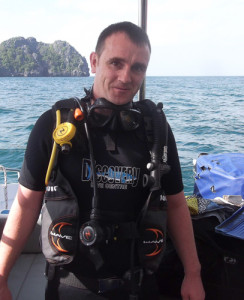 My name is Peter O’Connor. I’m 37 years old and I come from Bray, Co. Wicklow in Ireland. I first visited Thailand in 2001 and fell in love with the place. 13 years later, I’m planning my 17th trip to the ‘Land of Smiles’. I’ve always had a fondness for the islands and beaches in Thailand but it was only in recent times I decided to learn how to scuba dive. Thailand is definitely a great destination to learn and I’m now planning on doing a 7 month internship on Ko Tao in the not too distant future to learn how to become a scuba diving instructor. So far, I’ve dived around Ko Samui and Ko Tao which both offer fantastic coral reefs and spectacular marine life. While there are plenty more dive sites in the Gulf of Thailand, I’ve so far covered three of them and here are my thoughts on my experiences.
My name is Peter O’Connor. I’m 37 years old and I come from Bray, Co. Wicklow in Ireland. I first visited Thailand in 2001 and fell in love with the place. 13 years later, I’m planning my 17th trip to the ‘Land of Smiles’. I’ve always had a fondness for the islands and beaches in Thailand but it was only in recent times I decided to learn how to scuba dive. Thailand is definitely a great destination to learn and I’m now planning on doing a 7 month internship on Ko Tao in the not too distant future to learn how to become a scuba diving instructor. So far, I’ve dived around Ko Samui and Ko Tao which both offer fantastic coral reefs and spectacular marine life. While there are plenty more dive sites in the Gulf of Thailand, I’ve so far covered three of them and here are my thoughts on my experiences.
Sail Rock is a granite pinnacle in between Ko Pha Ngan and Ko Tao which rises 15 metres out of the water. It is widely regarded as the best dive site in the Gulf of Thailand by the most experienced divers there. Sail Rock has huge schools of marine life with giant barracuda, moray eels, scorpion fish, butterfly fish and many more. I was absolutely amazed at the amount of marine life, all the different colours of both fish and coral. It’s a really breathtaking experience diving here. Sightings of whale sharks are also common around Sail Rock.
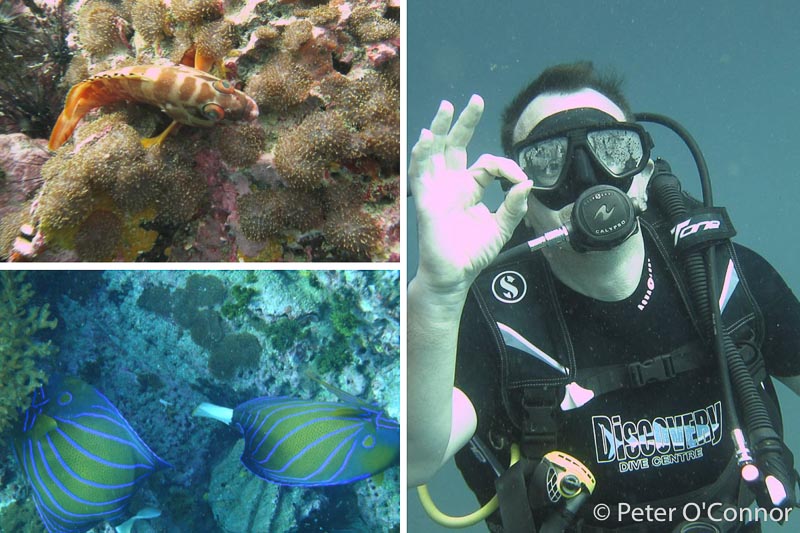
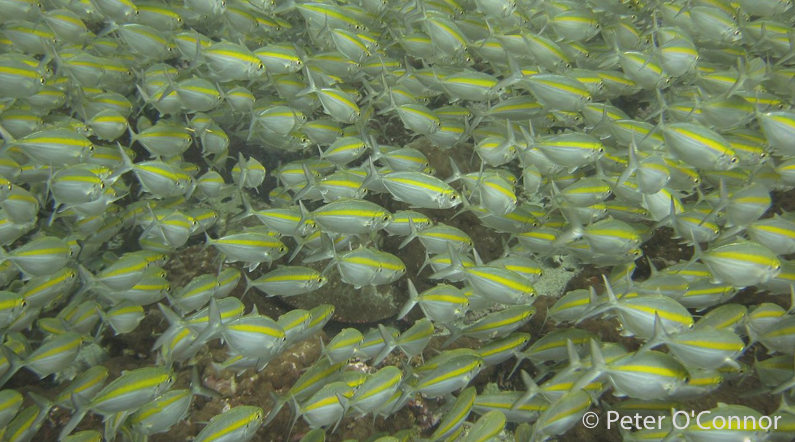
There are 3 popular dive sites in Ang Thong Marine Park which is situated north-west of Ko Samui. I dived off Ko Wao. The average depth in this sheltered bay is only 8-14 metres so it is an ideal site for beginners or less experienced divers. The site is well-known for its vast selection of soft and hard coral leading to an abundance of marine life. I certainly experienced a lot of marine life swimming around me but on the particular day I visited, visibility was only at 5 metres. It was late December when I did this dive which is still rainy season in the Gulf of Thailand and you can get days when the visibility isn’t at its best. It’s advisable to use a company that leaves early in the morning to dive this site because it is also popular with snorkelling tour groups so you get a lot of boats and people visiting here throughout the day.
This is a very popular site situated north-west of Ko Tao. Chumphon Pinnacle is widely regarded as one of Thailand’s premier dive sites but also one of the most challenging because occasionally you can experience strong currents here. I dived here in June and visibility was superb, ranging from 15-20 metres and there is an incredible selection of marine life. On my dives at Chumphon Pinnacle I’ve taken in giant barracuda, schools of barracuda, giant grouper, moray eels and have even got to swim around for about 10 minutes with a large green turtle. I’d strongly recommend this dive site.
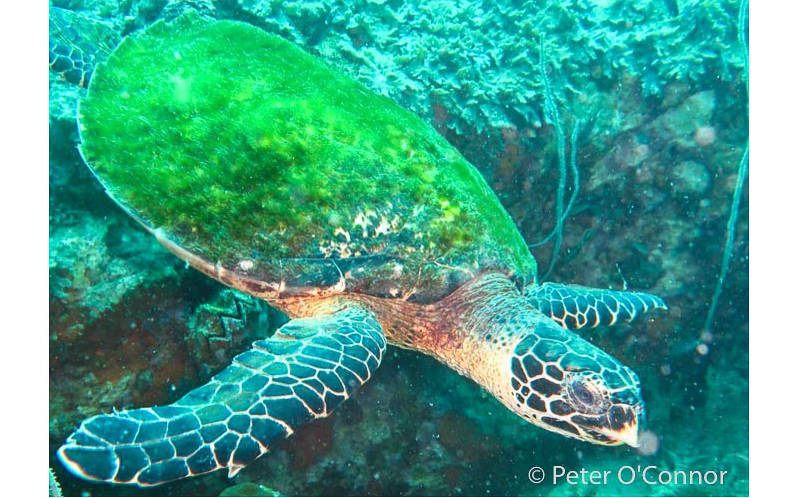
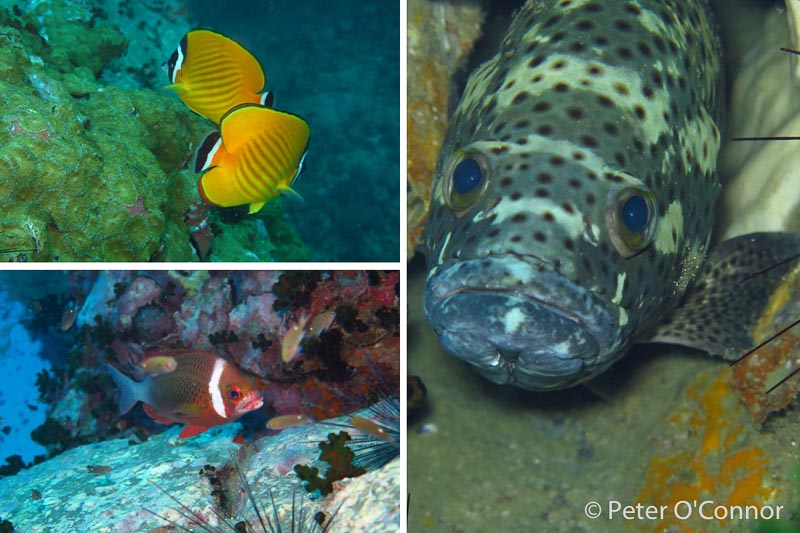
I will now give my thoughts on the two islands I’ve dived from, Ko Tao and Ko Samui, based on my knowledge and experiences.
Ko Tao is a beautiful little island in the Gulf of Thailand. It is just 20 square kilometres in size and is hugely popular with both divers and snorkellers.
Ko Tao is one of the cheapest places in the world to get certified and thousands of people from all over the globe learn how to dive here by completing the PADI open water course.
Recommended dive company on Ko Tao:
DJL Diving
Open water course, 4 days training, 4 dives, 4 nights accommodation: 9,500 Baht
Fun dives: 1,000 Baht per dive (reductions are available if doing more than one dive).
Sairee Beach is the most popular beach on Ko Tao with visitors as it has more dive shops, hotel/guest house options, bars and restaurants than anywhere else on the island. There are however several smaller quieter beaches you can also stay on such as Tanote Bay, Mango Bay and Shark Bay just to name a few.
All sorts of accommodation can be found on Ko Tao from wooden beach huts to plush hotels. Nowadays I tend to stay in mid-range accommodation and on my recent trips to Ko Tao, I stayed in Sairee Sairee guesthouse. It’s a nice comfortable clean guest house in the village about a hundred yards from Sairee Beach. Rooms with air con, hot shower, double bed, TV and DVD player cost 1,500 Baht. I would recommend here, but if you’re doing a diving course a lot of the diving companies offer free accommodation or rooms at reduced prices. Around Sairee Beach there are some nice restaurants and enough bars to create a lively scene without it being party central.
Food and drink on Ko Tao are very cheap, among my favourite places are the two Thai restaurants straight across the road from Sairee Sairee guest house. They both have a great selection on their menus and a meal and a drink (non-alcoholic) shouldn’t set you back anymore than 100 Baht.
A lot of people go to Ko Tao to do diving courses, ranging from the beginners to people training to be professional scuba instructors. This means people tend to settle on Ko Tao for a while as some may be doing courses or internships for several months. Around Sairee Beach there is also a great social scene among the divers with many of the dive companies organising parties at their resorts. With Ko Tao being such a small place, a lot of the divers get to know each other and most mix and socialize together so if you like to make new friends, it’s an ideal place to learn how to dive or to take your skills to another level. Of course when you’re diving early the next morning, it is never a good idea to stay out too late drinking the night before, but if you are looking for a night out there are certainly options, more so in Sairee than anywhere else on the island. As I already mentioned, a lot of the dive resorts regularly throw parties. Bars like Choppers Bar in the town always gets the crowd in and there are also bars on the beach which often organise parties.
With many of Thailand’s best dive sites surrounding it, some beautiful beaches offering fabulous snorkelling, a great social scene and a very low cost of living, it’s easy to see why Ko Tao attracts more scuba divers than anywhere else in Thailand.
To get to Ko Tao from Bangkok, you must first make your way to Chumphon either by air, road or rail and then take the 1.5 hour ferry ride to the island. Alternatively, you can fly to Ko Samui and take the ferry from there, but air fares to Ko Samui are considerably higher.
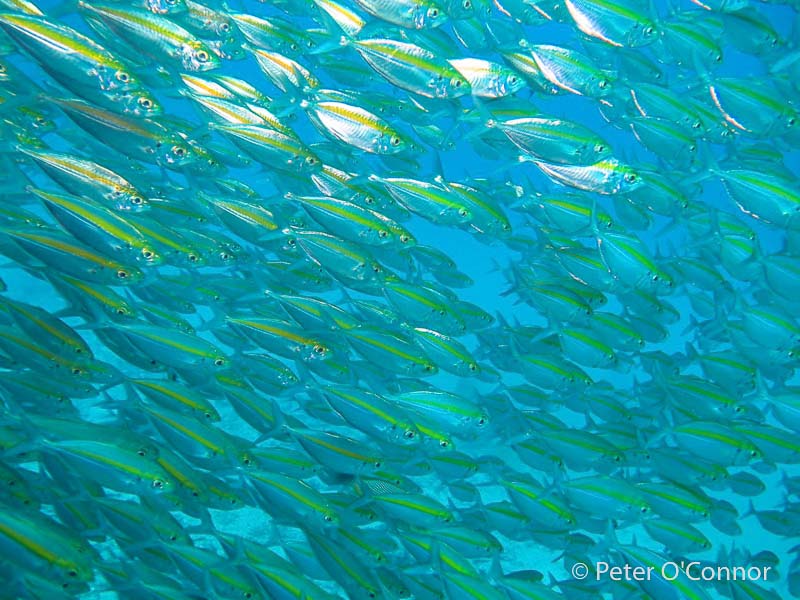
Ko Samui is a very different island to Ko Tao. It would be described by a lot of divers on Ko Tao as being more touristy as it attracts a lot of families, people on package holidays and more high-end travellers as opposed to the many backpackers that can be found on Ko Tao. But there is a reason for Ko Samui’s popularity with a combination of fantastic beaches, a good choice of hotels and a variety of shopping malls all helping to attract a range of visitors to the island. Samui also has a thriving nightlife scene including several large nightclubs pumping out music to thousands of revellers late into the night.
In general, people don’t visit Ko Samui just to dive. However it is a great place for a holiday and if you don’t mind spending that little bit extra, it is a great place to learn how to dive. Besides having some professional dive shops, it also boasts one of Thailand’s best dive sites in Sail Rock. And Ang Thong and Ko Tao are both easily accessible sites from Samui.
Prices on Ko Samui for scuba diving are considerably higher than Ko Tao. However, I must say that with Discovery Divers, you do get good value for money. Their company uses speed boats and get to the dive sites quicker than most of the other boats. Their instructors are all very experienced, they have the best of equipment, serve a great lunch when out at sea and email you free photos of the dives.
Recommended dive company on Ko Samui:
Discovery Divers
Open water course 3-4 days training, 4 dives: 17,400 baht
Fun dives: 2 dives Ang Thong 4,500 Baht, 2 dives Sail Rock 4,600 Baht, 2 dives Ko Tao 4,900 Baht
Ko Samui is thriving with tourists soaking up the beaches and the nightlife. Chaweng and Lamai on the east coast are the most popular beaches as both offer a lot of accommodation options mainly concentrating on mid-range to high-end. These two beaches also offer the most bars, restaurants, night clubs, travel agents, shops and other facilities. Chong Moen and Bophut on the north of the island are two quieter beaches which are also reasonably popular or if you’d prefer really quiet, deserted beaches, they can be found on the west coast of Ko Samui.
I like to stay in Chaweng which is the biggest beach on the island. Wooden beach huts are not the norm here with mid-range and high-end hotels generally making up the accommodation options in Chaweng. I usually stay in King’s Garden Resort, where you get a nice bungalow with air-con, hot shower, TV and a balcony for about 2,000 Baht. It’s right on the beach so you don’t have far to walk to work on the tan. Compared to the Western world, it is quite reasonable to eat or drink on Ko Samui but it isn’t the cheapest place in Thailand by any means.
More advice on where to stay on Ko Samui »
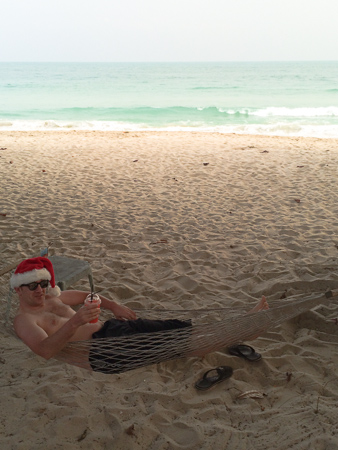
Relaxing on Ko Samui, Christmas Day
One of the reasons I like Chaweng is its nightlife. Soi Green Mango is the main strip at night in the centre of Chaweng offering several bars open into the early hours as well as nightclubs such as Sound Club and Green Mango Club which always attract the crowds. On the beach, Ark Bar throw parties every Wednesday night. Across the lake in Chaweng, Soi Reggae is another street with lots of bars.
Another great thing about Ko Samui is the seafood. Fresh seafood is served everywhere around the island. There are countless seafood barbecue restaurants and I often frequent them around Chaweng. The seafood is a little bit more expensive than Thai food, but if you don’t fancy picking a fish for the barbecue, most also offer a menu serving Thai food. If you fancy a roast dinner or a British/Irish breakfast, I’d highly recommend the food in Tropical Murphy’s Irish Bar in Chaweng.
If you’re not too hungover from all the partying and get bored with lying on the beach all day, there is so much to do on Ko Samui. Apart from scuba diving, you can take part in all sorts of water-based activities such as fishing, kite boarding, sailing and jet skis. Away from the water you can hike the hills, go zip lining, do a cookery course or get a traditional Thai massage. With great shopping too, there is certainly something for everyone on Ko Samui.
The quickest way to get to Ko Samui is to fly straight there with Bangkok Airways or Thai Air. However you can expect to pay about 5,000 Baht. A cheaper but longer route is to fly to Surat Thani with Air Asia (or Thai Lion Air) and then take the bus and ferry. A flight from Bangkok to Surat Thani will set you back 1,500-2,000 Baht and an additional 350 Baht for a joint bus and ferry ticket, each one taking 1.5 hours. Nok Air include the cost of the ferry and transfers in the price of their ticket, so compare prices and timings to see which is best for you. Or the cheapest way is to take the overnight bus or train from Bangkok to Surat Thani and then take the ferry across to Ko Samui.
Read more on Ko Samui »
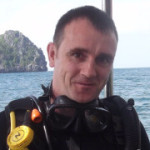 Peter O’Connor is from Bray, Co. Wicklow in Ireland. He first visited Thailand in 2001 and has been a regular visitor since then. With a fondness for the islands and beaches of Thailand, Peter is planning a 7-month internship on Ko Tao to learn how to become a scuba diving instructor.
Peter O’Connor is from Bray, Co. Wicklow in Ireland. He first visited Thailand in 2001 and has been a regular visitor since then. With a fondness for the islands and beaches of Thailand, Peter is planning a 7-month internship on Ko Tao to learn how to become a scuba diving instructor.